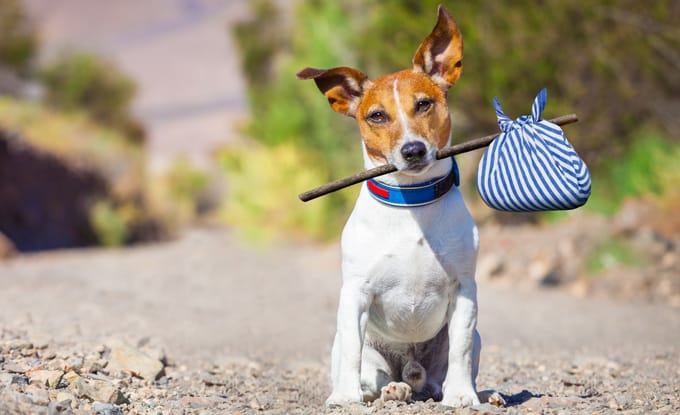Losing your dog is one of the most nerve-wracking events for any dog owner and, unfortunately, missing dogs are an all too common occurrence. It only takes a moment of inattention, an improperly latched door, or the smallest hole in a fence for even the most well-trained dogs to escape. In fact, the ASPCA estimates that 10 million pets go missing every year in the United States so to celebrate Pet Loss Prevention month, we thought we’d share some tips to help prevent you from losing your pet.
Secure borders
- If you have a yard, make sure you have sturdy fencing on all sides that is at least twice the height of your dog’s shoulders and regularly inspect fencing to make sure there are no gaps, holes, or other damages.
- Make sure all doors are properly latched/locked before leaving the house.
- Use appropriate signage to let people know there are dogs on premises and to keep all doors closed securely.
Supervision
- Do not leave your dog in the yard unattended: dogs can escape in a matter of seconds and are also routinely stolen from people’s yards.
- When taking your dogs off your property, keep them leashed, even if you’re only going a short distance. If you want your dog to have more freedom and be able to run, use a 20 or 30 foot long line.
Equipment
- Make sure all of your dog’s gear (collar or harness) is properly fitted before every use and inspect for any tears/rips.
- If your dog is an escape artist, use a sturdy, escape-proof crate. If your dog cannot be housed indoor, consider an outdoor kennel or run in a shady, well-ventilated area.
Proper Identification
- Have your dog wear a collar with their nametag and rabies tag at all times. Your dog’s nametag should have a valid and current contact number (home and cell). Your dog’s rabies tag number can be used to identify you and/or your veterinarian through county records.
- Have your dog micro chipped. Collars can easily slip off and lost dogs who find their way to a shelter or veterinarian will be scanned for a microchip. Make sure the information associated with your dog’s microchip number is up to date. You can ask your Veterinarian to perform this simple procedure during your pet’s next health check.
- Consider getting your dog a GPS collar. With the ever-evolving GPS and Bluetooth technologies, you can now find a wide range of GPS-enabled collars and tags so you can keep track of your dog.
Training
- Teach your dog to wait at doors, even in the car. I have taught my dogs to wait at the front door, side gates, the garage door and the door between the kitchen and the garage so that they have multiple “stop” points. To learn more about the “wait” command, make sure to read our “Preventing Door Dashing” blog post.
- Teach your dog a strong recall. The key to a successful and reliable recall is to make “come when called” as fun as possible and to practice in as many different locations as possible.
Here at Applause Your Paws we consider “Wait” and “Come when called” foundation skills and teach them in all our group class levels, daycamp and boarding programs. For more information on how to train your dog on these life saving behaviors, please feel free to call or email us at 786.529.RUFF (7833) or training@applauseyourpaws.com


